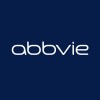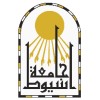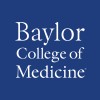
Study of the Safety and Efficacy of Elagolix in Women With Polycystic Ovary Syndrome
Polycystic Ovary SyndromeThis study will assess the potential impact of elagolix on disordered pituitary and ovarian hormones in women with polycystic ovary syndrome (PCOS).

Addiction and Acute Coronary Syndrome
Acute Coronary SyndromeAddictionthe study aims to identify the effect of addiction on TIMI flow in patients presented with acute coronary syndrome. identify the effect of addiction on outcomes of medical treatment of patients presenting with acute coronary syndrome. identify the relation between addiction and LV function. detect the effect of duration of addiction on myocardial infarction lesion and outcomes of pci.

Comparison of Fluoxetine Versus Citalopram Therapy to Control Postmenopausal Vasomotor Syndrome...
PostmenopauseHot FlashesThis study determined the efficacy of non-hormonal therapy with citalopram compared to fluoxetine, for the treatment of menopausal symptoms in Mexican women with vasomotor syndrome (VMS) and urogenital syndrome.

The Role of Dietary Calcium for the Treatment of Osteopenia in Girls With Rett Syndrome
Rett SyndromeRandomized, placebo-controlled trial of oral calcium supplementation for osteopenia in girls and women with Rett syndrome

High Intensity Interval Training in PCOS
Polycystic Ovary SyndromeStudy objective is to determine the effect of High intensity interval training on psychological wellbeing, Anthropometrics and Quality of life in females with Polycystic Ovarian Syndrome

Study to Evaluate the Effect of Pasteurized Akkermansia Muciniphila (pAkk) on Complaints Related...
Irritable Bowel SyndromeDouble-blind, randomised, placebo-controlled study to evaluate the benefit of pasteurized Akkermansia muciniphila in reducing complaints related to irritable bowel syndrome. Further objectives are to evaluate the beneficial potential of pAkk on any anxiety and depression complaints, as well as its safety and tolerability.

Comparative Effectiveness of Palliative Surgery Versus Additional Anti-Seizure Medications for Lennox-Gastaut...
Lennox Gastaut SyndromeLennox-Gastaut syndrome is a serious and rare form of epilepsy that begins in infancy and early childhood. Seizures and their consequences need medical attention, emergency encounters, and hospitalizations. Seizures disrupt home life for the patient and for family. Lennox-Gastaut syndrome is typically accompanied by disabilities in motor, communication, eating, and other skills needed for daily function. Lennox-Gastaut syndrome (LGS) has no cure. Although current treatments may help reduce the number of seizures, none are expected to eliminate them entirely; these treatments are palliative. The main treatments include anti-seizure medications and some surgical approaches, including the implantation of a vagus nerve stimulator (a pacemaker-like generator implanted in the chest wall and programmed by a physician to stimulate the vagus nerve in the neck) and corpus callosotomy (cutting through the band of fibers that connect the two sides of the brain). While both types of treatment (medications and surgeries) produce some benefit by reducing how often the seizures occur, both also have some risks. All medications can, in some patients, produce moderate to severe side effects. This is true of anti-seizure medications. Most patients with LGS take several anti-seizure medications at a time. Surgeries can also have associated risks and is additionally stressful for parents and family members. Currently, there is no strong evidence to support parents and physicians in deciding which type of treatment (more medicines or surgery) will be most successful for a child with LGS, and whether one or the other approach may lessen the toll that seizures take on a child's development and ability to function. This study has two components. It will engage a network of seven pediatric hospitals in the United States where children with Lennox-Gastaut syndrome are cared for and determine whether seizure-related emergency department visits and hospitalizations are more likely to be reduced following the use of additional medications or adding palliative surgery to existing medications. The investigators will determine whether medical versus surgical treatment is more likely to lessen some of the developmental and functional difficulties that affect patients with LGS. The study will also determine whether starting therapies at a younger versus older age makes a difference. The second component of the study will provide a description of the use of surgical versus medical treatment approaches across 18 pediatric hospitals in the United States (seven plus 11 centers). The investigators will describe how treatments differ across hospitals and over time. The results from this study will help parents and providers make more informed choices about treatment for children with Lennox-Gastaut syndrome and will highlight areas for improvement in providing the best possible health care for this severe, lifelong disorder.

Mirror Therapy in Complex Regional Pain Syndrome Type I
Complex Regional Pain Syndrome Type IThe aim is to evaluate the efficacy of Mirror Therapy on pain reduction and hand function in subjects with unilateral upper extremity Complex Regional Pain Syndrome Type I.

Glenohumeral Versus Subacromial Steroid Injections for Impingement Syndrome With Mild Shoulder Stiffness...
Shoulder Impingement SyndromeAdhesive Capsulitis of ShoulderA prospective randomized controlled trial enrolled 51 patients diagnosed with shoulder impingement syndrome and mild stiffness. Patients were randomly assigned to two groups: the glenohumeral injection group (Group GH) or the subacromial injection group (Group SA). After the final follow-up, 48 patients (24 in each group) were included for analysis Using ultrasound guidance, a solution containing 1mL of triamcinolone, 4mL of 1% lidocaine, and 7mL of 0.9% normal saline was injected into either the glenohumeral or the subacromial space. The following assessments were conducted at baseline and during follow-up visits at weeks 3, 7, and 13: ROM measurements for forward elevation, external rotation, and internal rotation; clinical scores including VAS, ASES, and Constant.

Novel Low Cost Bubble CPAP as an Alternative Respiratory Support in Low Resource Setting
PrematureRespiratory Distress Syndrome in Premature InfantThis is a single-blind randomized controlled trial done in a Level III neonatal intensive care unit. Preterm newborns with RDS were randomized to receive oxygen therapy through bubble CPAP vs ventilator-derived CPAP. Differences in arterial blood gases, oxygen saturation, number of surfactant and CPAP failure rate between study groups were analyzed.
